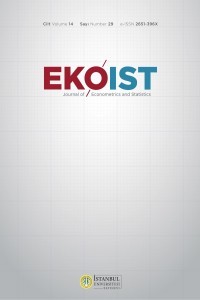Semi-Parametric Modeling of Churn Confounding Competing Risks Using Time-Dependent Covariates Among Mobile Phone Subscribers in Kenya
Semi-Parametric Modeling of Churn Confounding Competing Risks Using Time-Dependent Covariates Among Mobile Phone Subscribers in Kenya
Mobile phone service providers are currently experiencing high churn rates. As a result, service providers are trying to develop ways to predict churn rates and uncover why subscribers’ churn occurs. However, the task of predicting churn in the mobile phone industry is complicated due to the large, sparse, and unbalanced nature of the data especially when competing risks are confounded by time-dependent covariates. This paper aimsto develop a semi-parametric model (the adjusted Cox model) by adjusting the extended Cox proportional hazards model to model competing risks confounded by time-dependent covariates and uses data from three mobile phone service providers in Mombasa and Kilifi Counties in Kenya to analyze and evaluate the validity and performance of the model. The paper establishes that the adjusted Cox model is a better model for predicting subscriber’s survival outcomes as well as for detecting the most influential covariates when competing risks are confounded with time-dependent covariates.
Keywords:
Semi-parametric, Competing Risks, Time-dependent Covariates, Churn,
___
- Austin, P. C., Latouche, A., & Fine, J. P (2019). A review of the use of time-varying covariates in the Fine-Gray subdistribution hazard competing risk regression model. Statistics in Medicine, 39(2), 103-113. https://doi.org/10.1002/sim.8399 google scholar
- Beyersmann, J., & Schumacher, M. (2008). Time-dependent covariates in the proportional subdistribution hazards model for competing risks. Biostatistics, 9(4), 765-776. google scholar
- Cox, D. R. (1972). Regression models and life tables. Journal of the Royal Statistical Society B, 34(2), 187-220. google scholar
- Customer Churn Prediction & Prevention Model. (2021, December 22). Optimove. Retrieved January 15, 2022, from https://www.optimove.com/resources/learning-center/customer-churn-prediction-and-prevention#:%7E:text=Churn%20prediction%20modeling%20techniques%20 attempt%20to%20understand%20the,to%20the%20success%20of%20any%20proactive%20 retention%20efforts. google scholar
- Fine, J. & Gray R. (1999). A proportional hazards model for the subdistribution of a competing risk. Journal of the American StatisticalAssociation, 94 (446), 496-509. google scholar
- Therneau, T. M, & Grambsch, P. M. (2000). Modeling survival data: Extending the Cox model. New York: Springer-Verlag. doi: 10.1007/978-1-4757-3294-8 google scholar
- Başlangıç: 2005
- Yayıncı: İstanbul Üniversitesi
